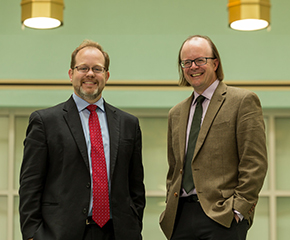A Presence Abroad
.jpg) |
|
A student at work at the New York University in Abu Dhabi. |
ALBANY, N.Y. (November 15, 2016) – International students who are interested in pursuing a global education but want to stay close to home are seeing increased opportunities.
A new report, co-authored by UAlbany’s Cross-Border Education Research Team (C-BERT), has revealed there are 249 international branch campuses (IBCs) that enroll at least 180,000 students worldwide. That’s a 26 percent increase from 2011.
The number of countries hosting IBCs has also increased, to 76, up 10 percent from 2011. China overtook the United Arab Emirates (UAE) as the top host country, with UAE, Singapore, Malaysia and Qatar rounding out the top five. Together, they host 98 IBCs, or 39 percent of the world’s total.
The top “home countries” — the United States, United Kingdom, Russia, France and Australia — account for 181 of the branch campuses, or 73 percent of total IBCs.
“While there are increasing questions about the sustainability of globalization efforts, these trends suggest that many countries still see cross-border education as a way to build capacity within their country,” said Jason Lane, a co-director of C-BERT and chair of UAlbany’s Department of Educational Policy and Leadership.
Findings were released last Wednesday by C-BERT, along with the Observatory on Borderless Higher Education (OBHE) — the world’s two leading IBC authorities.
 |
|
Jason Lane, left, with C-BERT co-director Kevin Kinser. (Photo by Paul Miller) |
Those involved, including Lane and C-BERT co-director Kevin Kinser, believe China has become the top host country due to strong student demand and government incentives. In contrast, UAE has seen a modest decline, in what is believed to be a wider trend of growth concentrated in Asia (China, Malaysia and South Korea) over the last five years.
Overall, their findings show, that though growth of IBC is undeniable, distribution continues to be uneven. Only four new IBCs were developed in Africa outside of the MENA region, and just one in South America, since 2011. In addition, of IBCs currently in development worldwide, about half are planned by institutions based in the U.S. and U.K.
“International branch campuses may be the most ambitious kind of cross-border higher education, redefining institutional identities and national systems,” said Rachael Merola, senior researcher at OBHE. “Our ongoing work marks the most comprehensive research to date on the IBC phenomenon, combining the resources of the OBHE and C-BERT to come to a new understanding of the past, present, and future of IBCs.”
“Quality assurance is adapting as the IBC phenomenon expands into more countries, said Kinser, formerly of UAlbany’s School of Education and the current education policy studies department head at Penn State. “We are seeing the emergence of new systems for managing and regulating truly multinational universities.”
The report, titled International Branch Campuses, Trends and Developments, 2016, follows on four previous editions, published in 2002, 2006, 2009 and 2012.
Findings were recently featured by Inside Higher Education and Penn State News.
![]() For more news, subscribe to UAlbany's RSS headline feeds
For more news, subscribe to UAlbany's RSS headline feeds
A comprehensive public research university, the University at Albany-SUNY offers more than 120 undergraduate majors and minors and 125 master's, doctoral and graduate certificate programs. UAlbany is a leader among all New York State colleges and universities in such diverse fields as atmospheric and environmental sciences, business, education, public health,health sciences, criminal justice, emergency preparedness, engineering and applied sciences, informatics, public administration, social welfare and sociology, taught by an extensive roster of faculty experts. It also offers expanded academic and research opportunities for students through an affiliation with Albany Law School. With a curriculum enhanced by 600 study-abroad opportunities, UAlbany launches great careers.


